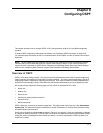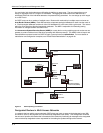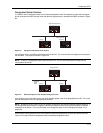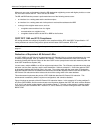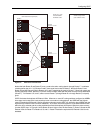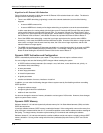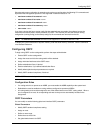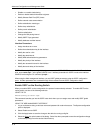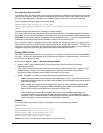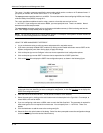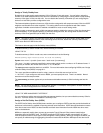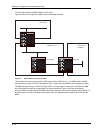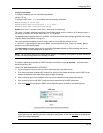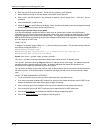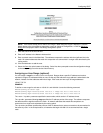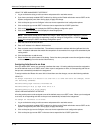
Configuring OSPF
Note Regarding Disabling OSPF
If you disable OSPF, the routing switch removes all the configuration information for the disabled protocol from the
running-config. Moreover, when you save the configuration to the startup-config file after disabling one of these
protocols, all the configuration information for the disabled protocol is removed from the startup-config file.
The CLI displays a warning message such as the following:
HP9300(config-ospf-router)# no router ospf
router ospf mode now disabled. All ospf config data will be lost when writing to
flash!
The Web management interface does not display a warning message.
If you have disabled the protocol but have not yet saved the configuration to the startup-config file and reloaded
the software, you can restore the configuration information by re-entering the command to enable the protocol (ex:
router ospf), or by selecting the Web management option to enable the protocol. If you have already saved the
configuration to the startup-config file and reloaded the software, the information is gone.
If you are testing an OSPF configuration and are likely to disable and re-enable the protocol, you might want to
make a backup copy of the startup-config file containing the protocol’s configuration information. This way, if you
remove the configuration information by saving the configuration after disabling the protocol, you can restore the
configuration by copying the backup copy of the startup-config file onto the flash memory.
Assign OSPF Areas
Once OSPF is enabled on the system, you can assign areas. Assign an IP address or number as the area ID for
each area. The area ID is representative of all IP addresses (sub-nets) on a routing switch port. Each port on a
routing switch can support one area.
An area can be normal, a stub, or a Not-So-Stubby Area (NSSA).
• Normal – OSPF routing switches within a normal area can send and receive External Link State
Advertisements (LSAs).
• Stub – OSPF routing switches within a stub area cannot send or receive External LSAs. In addition, OSPF
routing switches in a stub area must use a default route to the area’s Area Border Router (ABR) or
Autonomous System Boundary Router (ASBR) to send traffic out of the area.
• NSSA – The ASBR of an NSSA can import external route information into the area.
• ASBRs redistribute (import) external routes into the NSSA as type 7 LSAs. Type-7 External LSAs are a
special type of LSA generated only by ASBRs within an NSSA, and are flooded to all the routing switches
within only that NSSA.
• ABRs translate type 7 LSAs into type 5 External LSAs, which can then be flooded throughout the AS.
You can configure address ranges on the ABR of an NSSA so that the ABR converts multiple type-7
External LSAs received from the NSSA into a single type-5 External LSA.
When an NSSA contains more than one ABR, OSPF elects one of the ABRs to perform the LSA
translation for NSSA. OSPF elects the ABR with the highest router ID. If the elected ABR becomes
unavailable, OSPF automatically elects the ABR with the next highest router ID to take over translation of
LSAs for the NSSA. The election process for NSSA ABRs is automatic.
EXAMPLE:
To set up the OSPF areas shown in Figure 8.1 on page 8-2, use one of the following methods.
USING THE CLI
HP9300(config-ospf-router)# area 192.5.1.0
HP9300(config-ospf-router)# area 200.5.0.0
HP9300(config-ospf-router)# area 195.5.0.0
HP9300(config-ospf-router)# area 0.0.0.0
HP9300(config-ospf-router) write memory
Syntax: area <num> | <ip-addr> [nssa <cost> | stub <cost> [no-summary]]
8 - 9



